Shoemaking Supplies! Where To Buy Everything?
This article will explain everything you need as a beginner in shoe making to get started, so read it carefully.
You will also find all the links to the places I have mentioned in this video.
Beginners in shoemaking have a lot of questions about shoemaking and this is how it should be when you are a beginner in shoemaking.
In this post, I will talk with you about the main problems that beginners in shoemaking encounter and will show you how to resolve them. My goal is to make it clear to you what tools and materials you need to have, what is the best way to learn shoemaking as a beginner, and how much time you need to create a pair of shoes.
Why to learn shoemaking as beginners with minimum shoe making tools.
I will show you my approach to learning shoe making in the most efficient way in a short period of time like my students in shoemaking curses online do, and you can check here some of their work as a beginner in shoemaking [Beginners Shoemaking Program] and how they moved on to be a professional shoemaker.
I will teach you how to make shoes with a minimum set of shoemaking supplies with my step-by-step Shoemaking Tools and Materials training.
You want to make your own shoes, and you dream about learning shoemaking for so long, but before you start, there are so many obstacles that most of them you created yourself.
I am talking from my own experience and observation of my students that learn this wonderful craft for the past 11 years. There is a specific order of learning that I suggest for beginners in shoemaking and no matter which Shoemaking course [View All Shoemaking Online Courses]you will start with, this applies every time.
The number one obstacle that I hear from beginners in shoemaking is tools and materials.
The truth is, you don’t need that much to get started. There is a simple reason for this, and it is because you are a beginner in shoemaking.
You don’t need many tools, and you don’t need fancy machinery, because first, you need to learn how to work with basic tools and materials and progress as you go on. So, my approach to learning shoemaking for beginners 100% tested by more than 3000 students over the world, and you can read about one of the successful stories of one of my students in this post: “Shoemaking Courses Success! From Zero-Knowledge to Making Shoes Professionally” on how she from a total beginner in shoemaking progressed to launching her own shoe brand.
Once, I was a beginner in shoe making just like you, and trust me I didn’t have much.
In this shoe making article I want to focus on must-have tools and materials to show you that you can start learning shoemaking today.
Why as beginners in shoemaking do you need to know about the entire process of shoemaking?
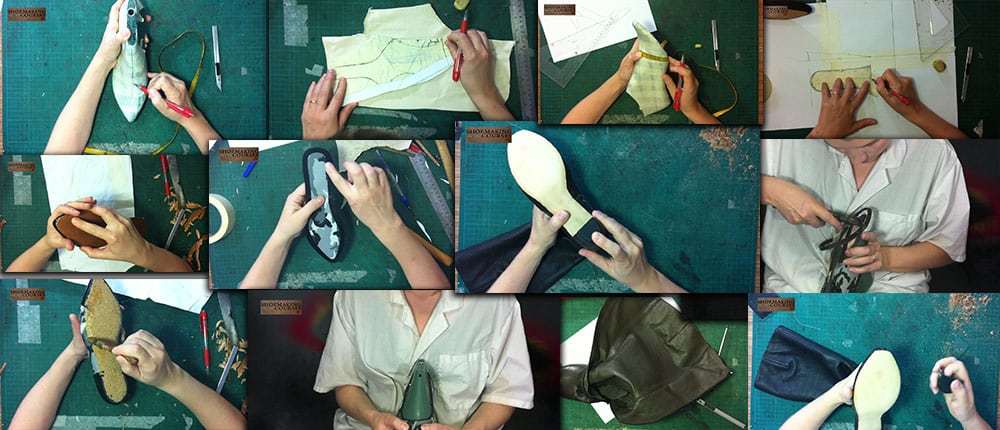
To show you the big picture and make you understand where you should use every tool and material, I will go through the entire process of making shoes briefly, from start to finish, so you will understand better where we need to use each tool and material. The fact is that we can understand and will remember better some processes if we will know the logic of the same process whether is it.
So, that’s why I will mention the entire shoemaking process with use of each shoemaking tool and material in each of these steps of making shoes.
If you want to know this process in depth, you are welcome to learn more about it in this post: “How to make shoes – 100 % guarantee! [Where to start?!]”
The first question that each beginner in shoemaking asks is: which shoemaking tools and materials to use in making shoes?
Whether you're interested in shoemaking for beginners or are simply curious about the art of shoe making for beginners, we've got you covered. Let's dive in!
Uncover the Secrets of Shoe making: Tools, Materials and Techniques
This is where your problem is starting because you are thinking that you need a lot of shoemaking tools.
This is how many different shoemaking articles that you found on the net mislead you. They list many different shoemaking tools, machinery, and shoemaking tools with names that you even don’t know what is it and as a result.
You think that is very difficult to arrange all these shoemaking supplies that you even can’t find in one shoemaking store.
So I want to break this myth and want to show you what tools you really need to use as beginners in shoemaking.
I will list all these shoe making supplies here, and in the tutorial below you will learn how to use all these shoemaking supplies in the making shoes.
I will show you all the needed shoe making tools and materials step by step following the shoe making process from the first step until the last one. So you will have a comprehensive idea about the entire shoe making process together with the tools and materials you need to use in each shoe making step. This logical approach to shoe making learning is the best way to learn this craft as beginners in shoe making.
The first in shoe making is shoe pattern making. It consists of many steps and I will talk about them briefly, to not overwhelm you but give you a general idea about pattern making because as beginners in shoe making this is what you need at the beginning.
Don’t worry, it only looks like there are too many shoe making supplies, but all the needed tools for pattern making you can buy in any stationery store.
The first step in shoemaking is making of Basic shoe pattern.
To make a shoe pattern you need to attach masking tape to the shoe last apply the shoe design on the shoe last. Then take your shoe masking tape pattern off the shoe last and attach it to the cardboard and cut it out. Then comes the next shoemaking step where we need to check the correctness of this shoe pattern working with paper. If you want to learn more about this stage of shoemaking work you can read this post: "How to Make shoes working with Paper [save your money]"
Shoemaking supplies: shoe last, masking tape, pencil, utility knife, cutting board, and cardboard. See all these tools here below.
Make from the Basic shoe pattern the upper and lining pattern
To each line of your basic shoe pattern add a certain seam allowance.
Shoemaking supplies: same tools + compasses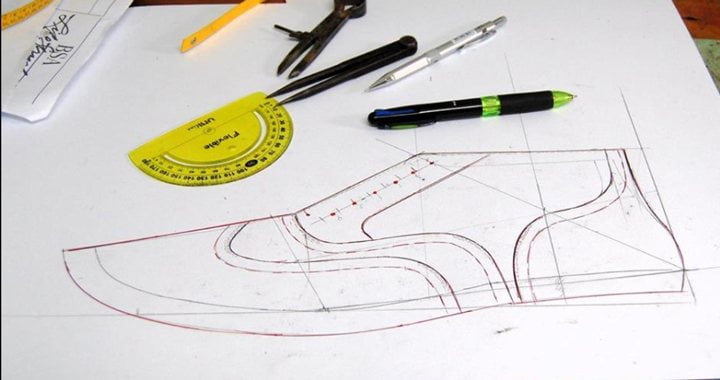
9 Essential Shoemaking Toolkit for Pattern Making
1.Shoe last for beginners in shoemaking
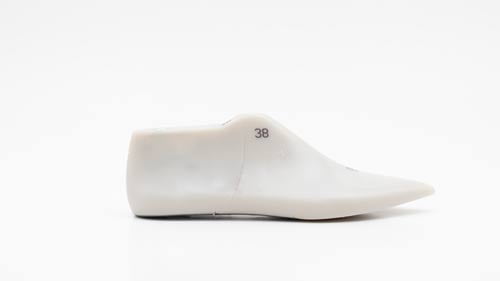
(if you want to learn about Shoe Last Measurements & Basic Pattern -Check this Course ).
Shoe last is the number one shoemaking tool you must have. The fact is that the shape of your footwear, the heel height, and the footwear type will depend on this tool. There are a lot of shoe last types with different toe shapes and heel heights and you need to choose also the right shoe last size that will feet perfectly your feet. In simple words, the shape of your shoe last will define how your shoe will look and if you want to learn more about shoe last, you can read this post: "The Ultimate Guide to Shoe Last Types and Shoemaking"
Also, I am pretty sure that you will want to have the right shoe last size because most of us, unfortunately, wear the wrong shoe. And if you want to discover what is your real shoe size and to know how to measure your feet to find a proper shoe last check out this post: "Accurately Measure Your Feet for the Perfect Shoe Fit"
2.Masking tape for beginners in shoemaking
This is a must-have material that you will use through the entire process and it is the first thing we use.
There is no need for special masking tape, it just needs to be a good quality tape and you can purchase it in every Office Depot store.
We cover the last with masking tape to draw our design on the last, later on, we will transfer this design ( m.tape) to cardboard to make our basic pattern.
To choose the right masking tape please read this post Shoe making Case Study: Cover Your Shoe Last Using Right Masking Tape. After you will create your basic pattern, you will move on to create the pattern of your upper and lining. To calculate the seam allowance for upper and lining you will need this tool.
3.Ruler with a straight angle
4.Shoemaker tape

5.Cardboards for shoemaking
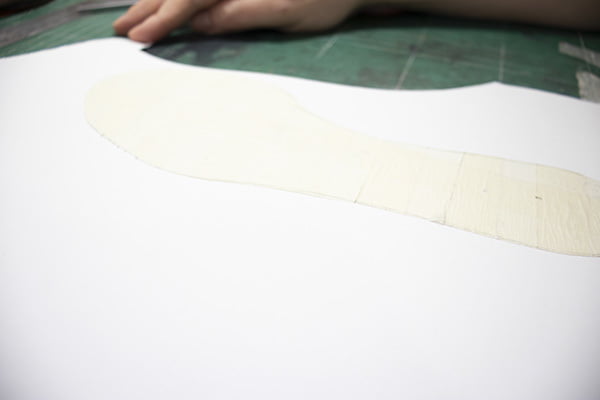
6.Utility knife for beginners making shoes
7.Cutting board (any plastic board, even cutting board for vegetables)
8.Silver erasable pen
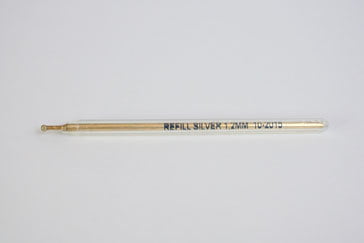
We use this pen to mark all important points and lines on our lining and upper leather parts. It is a very essential tool for beginners in shoemaking because it will help to assemble all parts of the leather in order to create a full upper following your shoe pattern. The fact is that sometimes it is difficult to find this silver pen, so in this case, I would recommend to substitute it with a straight shoemaking awl and I talk about this tool in continuation of this article. You can check it out here: "Shoemaking awl for beginners in shoemaking"
9.Compass for beginners making shoes

This compass is a special compass for shoemaking that has two edges in order to mark certain lines during pattern-making. we use it mostly when we want to develop upper and lining patterns by adding special seam allowances to each part of the shoe pattern. But if you can't find this specific compass you can usethe same compasses as you used in geometry class, at least it has the same function, so if you can’t find the “shoemaker compasses” just buy the ordinary one. In this "Loafers making course" I show how to work with simple compass creating shoe patterns.
Beginners making shoes could test yourself before diving into shoemaking craft.
Now, before we will move on to the next shoemaking tools and materials, let’s talk about making shoes as a beginner and if you like it. So before, you will start to gain all the needed shoemaking tools, I advise you to test yourself to know if this craft is really for you by making simple sandals following my instructions in this shoemaking tutorial.
The tools for pattern making that I already listed is useful in making any shoe type, so they are relevant for this shoemaking tutorial too.
This is one of the approaches I developed back in the 2012 year when I started making shoemaking tutorials on Youtube. The great idea about this approach is to make sandals professionally without a shoe last using your own feet. It is not a DIY project because I use the professional shoemaking approach and go in-depth through the entire process of making sandals starting from pattern making until the finished pair.
Obviously, you don’t need to make this test, if you don’t want and want to start making shoes right away. You are on the right path, don’t worry, and I am here to make it easier for you because I also was once a beginner in shoemaking and know all your doubts. That's whay let's continue with the shoemaking steps to know what other shoe making tools and materials you need as beginners in shoemaking.
How to make shoes with minimum set of shoemaking supplies
The entire process of making shoes includes many different shoemaking steps and right now I will show you shortly how to make shoes work with a minimum set of shoemaking supplies that you can use at your home making any footwear type.
I want to explain to you how to make shoes with these tools, so you will not have this question anymore, for sure. So, first I will show the shoemaking step and which tools and materials are used in each of them and then I will show you these tools and materials, so you as beginners in shoemaking will get the full picture of making shoes.
So after the making of basic shoe pattern, the upper and lining patterns comes next step of making shoe.
Making of the shoe upper
Cut leather of the upper and leather of the lining using upper and lining cardboard patterns. Assemble and sew the shoe upper and lining upper.
Shoemaking supplies: leather, utility knife, cutting board, silver pen, sewing machine or sew by hand, polyester thread

Shoe lasting
Shoe lasting is a process during which you put the shoe upper on the shoe last and attach the upper to the insole. The purpose of lasting shoes is to stretch the shoe upper on the shoe last and to give it the desired shape.
Lasting shoes involve different shoemaking techniques working with shoemaking pincers, shoemaking nails and contact glue.

Sole making
After the step of shoe lasting you need to make a shoe sole. There are few materials to make your shoe soles from and the most common material is vegetable-tanned leather.
In all my online shoemaking courses I explain step by step how to make shoes with leather soles. To explain to you briefly, you need: to make a pattern of the shoe sole, cut it from leather
attach it and finish it.
Here in this post ‘’How To Finish Your Shoe Sole [Shoemaking Tutorial]’’ you can learn how to make beautiful shoe sole finishing.
Shoemaking supplies: shoemaker knife, shoemaker hammer, shoemaker rasp, contact glue, glass, and sandpaper
Heel making
Attach ready-made shoe heels or make your own heels.
There are few approaches on how to make shoe heels and you can learn them at my shoemaking courses online, for examle, in this shoemaking course: " Heel making course"
Shoemaking supplies: shoemaker knife, shoemaker hammer, shoemaker rasp, contact glue, glass, and sandpaper
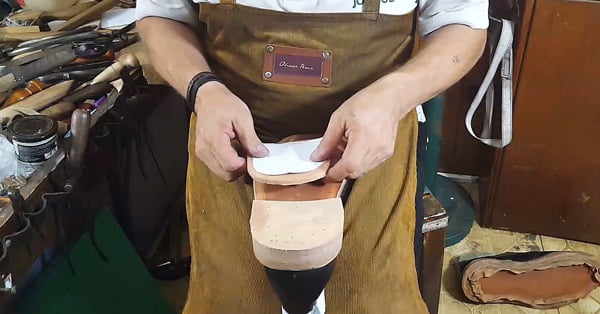
The Final Touch: Shoemaking Finishing Techniques for a Professional Look
Take your shoes off form the shoe last and make a sock lining and attach it
Learn in this post ‘’How Sock lining Can Improve the Comfort of Your Footwear? [Shoemaking tutorial]’’ why shoe sock lining is important in the making of a shoe
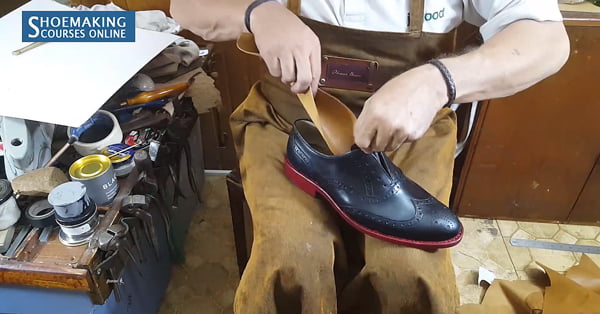
This was a very short demonstration of the entire process of shoemaking with mentions of the shoe making tools and materials that we use in each step and right now let's take a close look at all these tools and materials for beginners in shoemaking.
8 Must-Have Shoemaking Materials for Your Footwear Project
1. Leather for upper and lining

There are diffirent leather for shoemaking and for beginners in shoemaking I recommend these types of leather that I mentioned in this post: "Discover the Top Leathers for Shoemaking: A Beginner’s Guide"
2.Vegetable-tanned leather for soles and heels
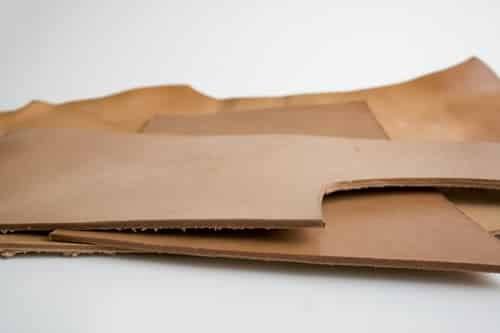
This is almost the end of the shoemaking process and there is no better material to use for your sole than good vegetable-tanned leather.
In my courses, I teach how you should prepare and skive your vegetable-tanned leather sole and also how to shape it. For example, in this shoemaking course "High heels pump shoes" I teach on how to build by yourself very high heels for women shoes.
The vegetable-tanned leather will be also used for making your stacked heels and you could learn different techniques on how to make heels on and off the last.
Vegetable-tanned leather can be also used as an alternative to the shank board and taxon board when creating insoles.
As you will be using a low-heel pump last you can reinforce the arc area of your shoe with a straight piece of veg-tan leather. This will be also an alternative to the steel shank, but it should be used only in the low heel last up to 1 cm.
Vegetable-tanned leather is one of my favorite natural materials and I recommend to use it to every beginner in shoemaking. And if you want to learn more about how to make Bespoke Shoes with 100% natural materials, Check- Bespoke Derby Hand-sewn Opanka Shoe Making Course )
3.Insole cardboards: texon and shank board
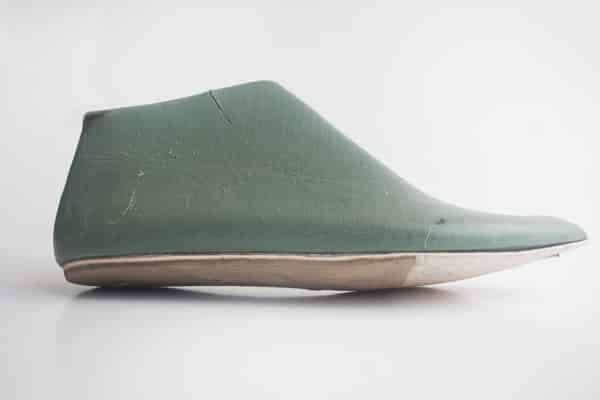
In shoemaking we can make shoe insoles working with different materials: texon and shankboard, or vegatable tanned leather. In my shoemaking courses I teach how to work with all these materials, for example in this course: "Handmade Midsole Course" I teach how to make shoe insoles out of texon and shankboard.
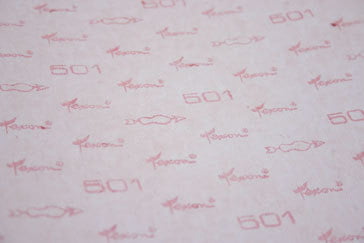
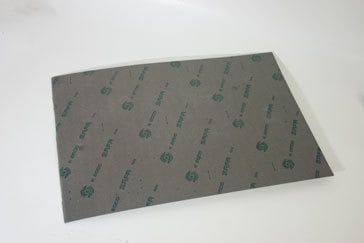
These shoemaking materials are cheaper than vegetable-tanned leather and maybe it is a good option for beginners in shoemaking. The problem could be only to find them in small quantities. But you can get them together with all the other shoemaking tools and materials that I offer in my 1 Year Shoemaking Program.
4.Steel shanks
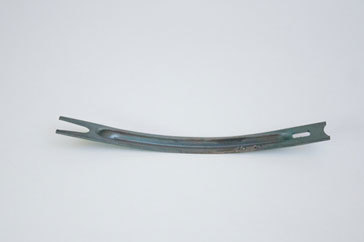
We must place steel shanks between layers of insoles to create a good support for the body weight, especially if we want to make shoes with high heels.You want to learn more about steel shanks, you can read this post: "Steel Shanks In the Insoles Construction".
5. Chemical non-woven fabric (celastic material for shoe counters)
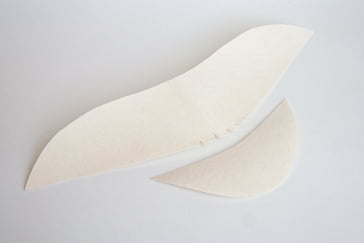
We use this material to make shoe counters. These are inner parts of footwear that keep shape of the shoes and protect our feet. This material is activated by solvent but before we need to make pattern for the counters and toe puffs and cut out this material using these patterns.
Beginners in shoemaking can use this material and activate it with shoemaking glue (we will talk about glue later), like we do in my "Sneakers making course".
Now, if you want to learn more about shoe counters, read this post: "How to Make Shoe Toe Puffs? ✅Shoemaking Training"
6. Reinforcement tapes: 4mm and 15mm width
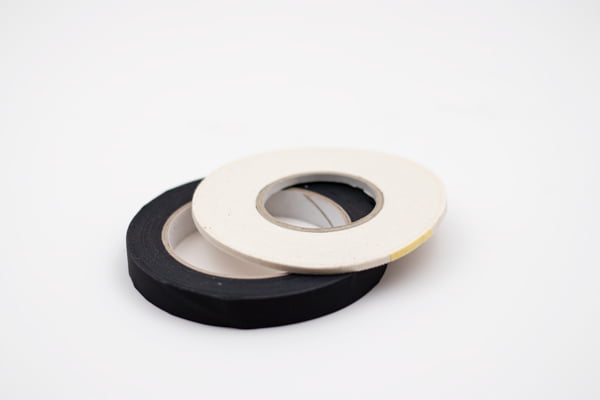
Before sewing the upper we must reinforce the top line so it will not stretch during lasting and we need to reinforce the back seam. There are 2 main reinforcement tapes that you can use in shoemaking: 4mm reinforcement tape and 14mm reinforcement tape. For beginners making shoes is must have tapes to create shoes easier and with good quality.
7. Two Types of the Shoemaking nails
In making shoes professionally you need to use two types of nails:
short nails=0.9 cm
long nails= 2cm
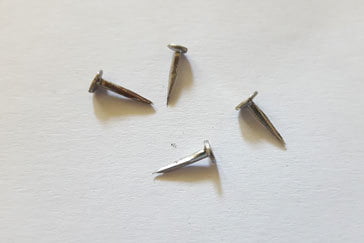
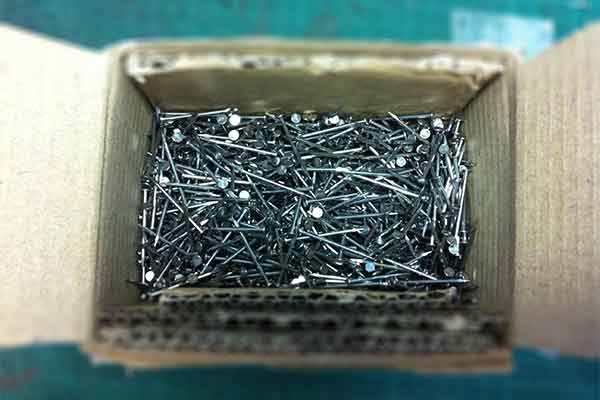
When lasting we use both types. The long type we use for the front are and they are long so we could bend them. The short nail we place to attach the heel, and we leave them there. Please remember, that you should do it only if you have a steel plate on the bottom of your last.
There are few shoe types where we can use shoe lasts without steel plate, for example in making sandals like we do in my "Unisex sandals course" or in making shoes with stitch down construction like we do in my "Dr. Martens Boots Course".
The first one is short nails with length of 0.9mm and with big flat head that we use mostly in the lasting process of the back part of shoes.
8. Contact glue
You must have a glue for our shoemaking process, and you already read where we use it in shoemaking, but let's recall it briefly:
- To assemble the upper before sewing
- To attach the upper to the insole
- To attach the sole
- To make our leather stacked heel
There are many different types of this glue, what is important is that it must be the glue for leather only. For example Renia or Burge adhesive.
5 Shoemaking Tools for Crafting Your Own Shoes
1. Shoemaking Awl I recommend for beginners in shoemaking

2. Shoemaker knife for beginners
There are plenty of knives for shoe making but I think as a beginner in shoemkaing you should have one good shoemaking knife and trust me it will be your friend. A good shoemaking knife can be used in many stages of our work. For example, the next step before sewing the upper is skiving the edges and you can learn more about this shoemaking step in this post: "How to Skive Leather in Shoemaking?!"
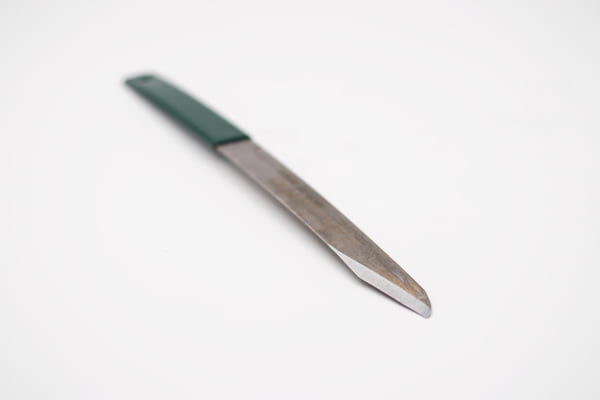
You can also use your shoemaking knife to cut the Vegetable-tanned leather, skive the sole ( as I show in my lessons) and trim the extras when making your stacked heel.
I use a good English shoemaking knife (22x2.5cm) that I got from “George Barnsley and Sons” ( UK, Sheffield).
3. Shoemaker's hammer for beginners
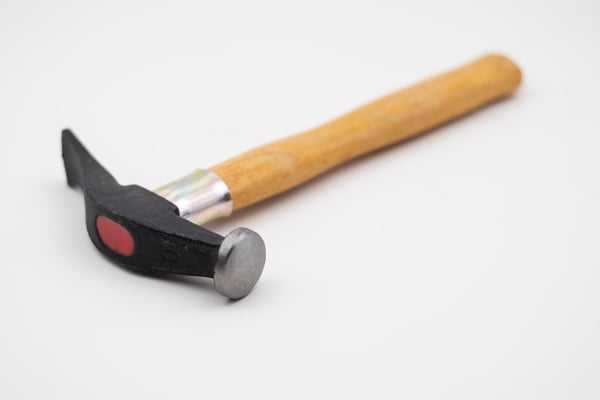
4.Shoemaker's pincers for beginners inshoemaking
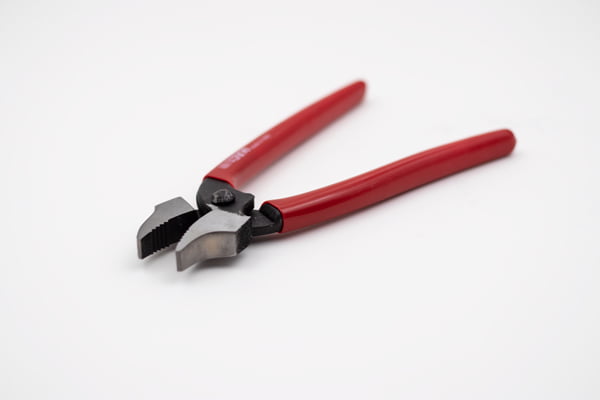
In lasting, we need to consider the type of leather that we use, and that is why in my courses I teach to check the leather that you will use first. You need to know how to last different shoe models but it is very important to have comfortable pincers, and if you want to know more about the lasting process, especially if you are a beginner in shoemaking, you can read this post: "Lasting shoes. Where to start?"
You should have lasting pincers with a hammer. This way you don’t need to use a real hammer when lasting and it is much more comfortable and easy to last.
5. Shoemaker's rasp for beginners in shoemaking
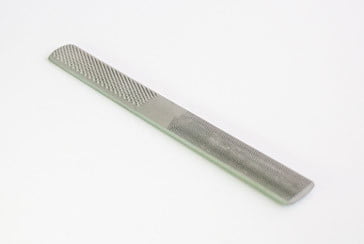
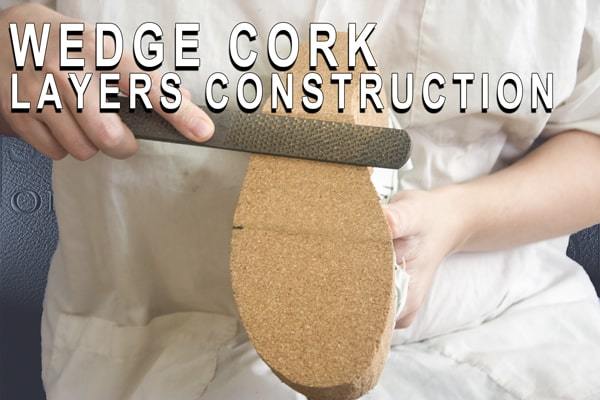
6. Untraditional tool for beginners in shoemaking
This is a great unorthodox shoe-making tool that beginners making shoes can use throughout the entire process. The fact is that there is a lot of sanding in making shoes and obviously not everyone can allow himself/herself financially the professional sanding machine. So I come up with the idea that beginners in shoemaking that want to make shoes at home can use a Dremel drill instead of an expensive, big sanding machine and almost every member of my shoemaking courses has it in their arsenal.

How to work with this shoe making tool and where to use it, you are welcome to read my post “Dremel drill: 8 Ways to Use This Shoemaking Tool” to see what you can do with this tool. It is also sold everywhere and it’s very easy to find.
7. Sewing machine for beginners making shoes
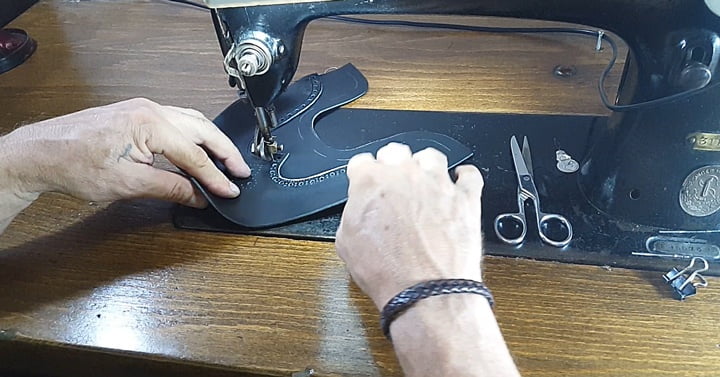
There are many advanced and new machines there obviously, but as beginners in shoemaking, I will not suggest investing so much money in an expensive sewing machine. I personally like the old sewing machine such as the Pfaff sewing machine the most. I have had one for more than 15 years and it works perfectly (knocking on the woods), and I have a flatbed sewing machine because all footwear types we can sew using this type of sewing machine. We can use it even to create boots and in my "High Women Boot course" I teach the special shoe pattern making approach on how to create boots working with a flatbed sewing machine.
Also, you can choose other brands of sewing machines like Singer, Brother, Husqvarna, and Necchi. Many of the Shoemaking Courses Online members purchased second-hand machines on eBay.
There are 23 tools and materials on that list and that is what you need to get started. As you will get more experience because that is what you need in shoe making, you will buy more tools, and more materials but for a beginner like you, this is a perfect list to get started.
Now you know that you don’t need much to get started, just do it.
Minimum Shoemaking Tools We use to make Benchmade shoes
Now, it looks like a very long list of shoemaking tools and materials but all the needed tools for shoe making you can buy in your local store or in one of the online stores that I mention here below.
And you really don't need that much to make shoes.
In my shoemaking courses I teach how to make "benchmade shoes", meaning on your own, without industrial mashinery and a full team, and we do it in all range of courses:
Bespoke Derby Hand-sewn Opanka Shoe Making Course
English Welted Brogue Oxford Men's Shoe Course
But this is the list you will need:
- Shoe last
- Insole cardboards:
- texon board
- and shankboard
- Steel shanks
- Chemical non-woven fabric (celastic material for shoe counters)
- Silver erasable pen
- Reinforcement tapes:
- 4mm and 15mm width
- Shoemaker knife
- Shoemaker hammer
- Shoemaker pincers
- Shoemaker rasp
- Short shoemaking nails to use it in shoe lasting of the heel part
- Long shoemaking nails to use in shoe lasting of the front part of the shoe upper
Check my full shoemaking tools kit in my 1-Year Shoemaking Program
So you see, you, as a beginner in shoemaking, don’t need to have any machinery or every existing shoemaking tool, you need to find all these simple shoemaking supplies to start learning shoemaking and making shoes.
Regarding the sewing machine, you can start making shoes without it at first, and then you can search for a second-hand sewing machine. Now, if you really want to know how my shoe making courses online can help to learn shoemaking, check it this post : "Shoe making progress on my shoe making courses online platfrom"
Many of my students don’t have a sewing machine and sew shoe uppers by hand. It is possible if you have a big desire to learn shoemaking and as a beginner in shoemaking, you can start making shoes without it. Check some works of my students to be inspired by the possibility you would have in making shoes.
Right now you know how to make shoes, you know the entire process of making shoes.
So don’t be confused anymore and if you still have questions on how to make shoes by yourself, make sure to ask me!
Everything You Need to Know About Making Shoes: Supplies and Timeframe
This is your next most common question as a beginner in shoemaking and to answer it we only need to make a conclusion of the two of your previous questions.
- To make shoes you need to have 15 shoemaking tools listed previously.
- 8 shoemaking materials
- Knowing of the shoemaking process
- Practicing in the making of shoes
- Passion for shoemaking craft
How Long Does it Take to Craft a Shoe By Hand? Understanding the Shoemaking Process
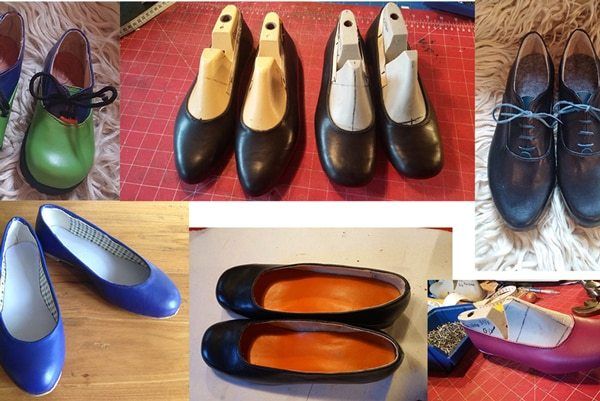
This is the next question that you as a beginner in shoemaking ask me frequently.
Because many of you think that to make shoes it will take a few months ( it could be if you don't have these 5 things listed above), you don't even try to start making of shoes.
Based on my experience working with many beginners in shoemaking from different countries, with different primary occupation and from different societies, I want to break this myth too
It totally depends on how much time you can devote to shoemaking but if you will practice in making shoes at least 3 hours a day, you can make a shoe by hand approximately in 11 days.
It will work in this flow:
- In 2 days you will make the shoe pattern
- In the 2 days, you will cut leather, assemble and sew the shoe upper
- In 1 day you will make preparations before the shoe lasting: make the shoe insoles
- In 1 day you will last your shoes
- In 2 days you will make the shoes sole and attach the shoe heels if you have a ready-made heel. If you need to make heels by hand add an extra 2 days.
- In 1 day you will make a shoe finishing
Now, let's talk about another important thing that you can't miss out on if you are a beginner in shoemaking. I am talking about an order of shoe making learning. Does it matter form which shoe type to start shoemaking learning? In my opinion, it does matter, if you want to learn in the easiest and most efficient way, starting from simple shoe types and slowly moving on to more complicated footwear types.
Best way to learn shoemaking for beginners
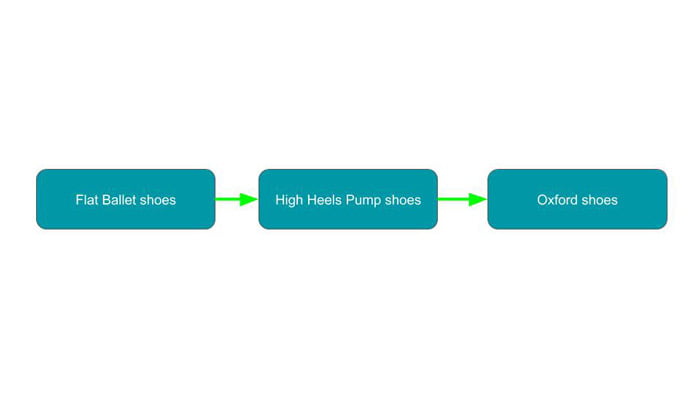
The fact is that when you start to learn something new you start usually with the basic things, you don't rush to some complicated tasks if you are a newbie. When you start, for example, learning some foreign language you usually start from learning letters, then move on to read or learn some basic words. Correct?
So why do you think to not use the same clever approach in learning shoemaking craft?!
What I recommend to any beginners in shoemaking, starting from my dear students, is to start from the basics of shoemaking, like making "Flat ballet shoes" for women or "Loafers" for men, and then move on to other footwear types.
You need to understand that already after learning this classic footwear type like Flat ballet shoes, you already will be able to create a variety of flat ballet shoe designs following the smart shoemaking approach that I teach in the courses. And in this post:"Making Flat Ballet Shoes[ Unlimited Designs]" you can learn more about this shoe making approach.

I developed the system that allows to all beginners in shoemaking learn shoemaking in most effective way and it is proven by the works of my students. Now, I already talked about my approach in this post: "How to make shoes – 100 % guarantee! [Where to start?!]", so you are welcome to learn more about it.
I also have a special program for "Beginners in shoemaking" that I created especially for you who have a great passion for shoemaking and want to start from something small at first.
Now, if you thinking about creating your own shoe brand and planning to attend a shoe fair /footwear trade show to learn more about this business, I recommend reading this post first: "Shoe Fair: What You Need To Know To Sell Your Shoes!" to overcome many many obstacles you may encounter
These were the primary points I wanted to cover to help you better grasp what you should know initially if you plan to start learning shoemaking.
So please feel free to ask me anything here if you have any questions about any of the topics covered.
Thank you for reading,
Sveta Kletina

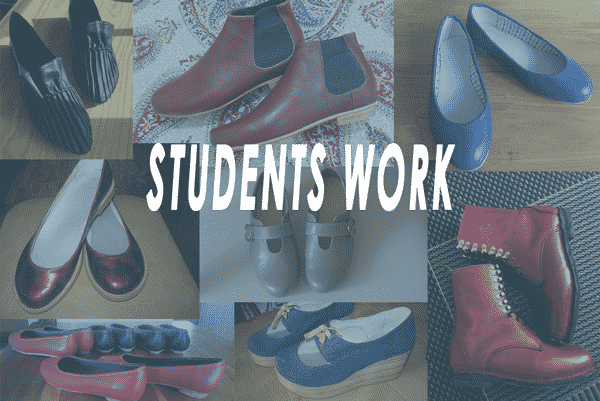




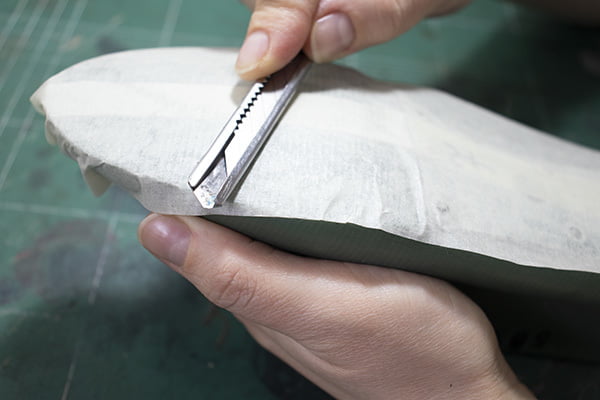
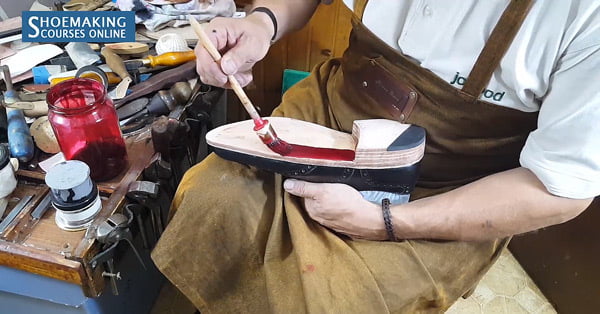
really love make my shoe
Very useful for me.
i am intrested in this course .i am also a shoes desighner in pakistan now i wish to further study in shoes field please tell me about admission and study timming.
Hi,
My courses are online and are available at any time. Y can find information o pricing:
https://www.shoemakingcoursesonline.com/shoemaking-memberships-3/
rrerds,
Svta
Thanks dia
Hi Sveta
I would love to buy from the Italian online shoe store Shoetechnik.com but they dont deliver to the US. Its harder to get tools here than in Europe.
Any suggestions?
Do you recommend a particular website here in the states?
Thank you Sveta!
I am from oman …..I need to buy tools for shoemaking what tools do you recommend
Hi,
You can sign up for my email list on the website and you will get full list of tools and materials.
Thank you for your guidance in step by step instructions on how to be a beginner in shoe making.
I will like to know or see all the tools and materials/machines to be use in the making of shoes.
Thanks a lot.
ALI.
Hello Sveta,
I am a beginnger and would like to attend your shoemaking online course including the shoemaker kit.
some questions.
1) my size is 38,5 i am not sure which size to select, 38 or 39. My longest feet is 24.3 cm? which one do i need to select?
2) I wanted to register but i only get the option for 22nd of August while i would like to start next week or when i receive my kit.
3) I do live in the Netherlands, how long wil it take to send the kit to here?
thank you for your feedback!
Take care and kind regards,
Kamla
I will sent you an answer to your email.
Hi. I’m a beginner from Nigeria. I’d like to get registered for your courses. Most of the basic tools are very accessible here so that’s not really not a problem. I have challenges with drawing patterns and making straight cuts
plz send me the list
Everything is here on the page, you are welcome to read it.
Please am also interested
WOW!!! Very educative n it gave me more information than I thought I would get on the internet.
Waooo so educative and interesting one. Please I am interested in joining ur online class
Hello
My name is louisa I’m a beginnger and would like to attend your shoemaking online course .
Thanks
Hi, I would like to enroll my son for footwear design online, can you please send me information on what you need to start
Hi, I will send you more info by email.
Hello! My name is Nathaniel; I also am a beginner and interested in your online courses. Thank you for the information you have already provided me. It is a start. I look forward to your reply.
Good work
Nice teaching, very unique and educating,thank you.
Hi Sveta, I love to make sandals. Is there a specific product to coat the sole leather with, so that it stands the sweat, dust rubbing etc that it's exposed to?
Also I would love to do hot foil embossing on the sole but I am equally worried that it will be rubbed of very quickly due to the exposureundefinedrubbing from the heal. Is there something to protect the embossing so it can last longer?
Thanks, Freya
My dad was a shoe designer…very well known in Kenya he passed away sadly and left his factory and company to me .I know nothing about shoe making ..but I'm determined to get started and be as good as he was ..im looking for basic beginners tutorials especially on how to use a sewing leather machine..and to draw patterns how long will it take till ive fully understood the process
Hi. I live in Portland OR USA and have a hard time finding shoes for my daughter (size 18) that don't have heals (she is 6'7") will this course help her learn to make some in her size? Can I get more information on this course, like how much it is etc?
Thank you.
HI, I will send you more info by email.
I'm interested
as a old shoe maker
of 70 years experience i think you will need a lot more shoemaking tools than you show there
There are many more tools, a lot that you can or need to use in making shoes, but this is for beginners and it is more than enough. They will get experience and step by step get to use more tools.
I really appreciate the way you explain those things,, especially for we beginners,God bless you.
I'm very interested in learning how to make shoes I want to make a shoe that's very comfortable and lightweight on my feet
Hi
I want to learn how to make shoe
Take a look at our online shoemaking courses here
https://www.shoemakingcoursesonline.com/on-line-courses/
Are you going to issue certificate to that effect? If yes, how long should will be expecting it.
I really want to learn shoe making but am from uganda
Thank you for briefing me on shoe making, bless you, I hope to learn more whenever I register for the course.
Great Work Sveta Kletina. God Bless You.
Hi! Your summary of the Course is interedting! Would appreciate if you would let me know the cost of same and from where the tools you've listed can be obtained, whether the materials that are used are being supplied as part of the course.
Thanks
George.
Thanks very educative.
I'm interested in this course
Im intetested making shoe design like air jordan 1 and nike air force 1
I am ready to learn
Nice procedure
Great needs your advice more on this am in love and in serch of such business now I can rest with this shoe making
I love yhis i am interested to learn more
Splendid
Am interested in the course
Interested start
Good
I Love your illustration
I want to involved am also a shoe maker
So I want to involved in this too
Good day,
I would like to know more about this course.
I find this article SMART.
Thank you so much.
Good
I love this work
I so much thank you and God bless in all your endeavors. I gained a lot
thank you Sveta. Your blogs and videos have been very helpful
Wow can you coach me
Just like your lesson. Thanks for the information and I would like to be getting your update please. Connect me through my email below
very interested in learning to be a cobbler shoe maker and designer in future and start from begining….thank you maybe l have found what ive been looking for
Nice. I love it. Thanks
This is great, really different from what I see some shoemakers doing. I'll love to see some list and pics of these tools.
Xhanks for the lecture please and I've also picked up many ideas so let me start practicing
This is impressive.
Am happy about what I learnt from u. I really enjoyed it.i would like to learn more.am also a shoe maker in Ghana.thanks
I came across your video on YouTube and I am very much interested in the online shoe courses.thank you so much
Gracias por la información me es muy útil yo estoy emprendiendo en la fabricación de calzado.saludos desde Barcelona España. Que sigas cosechando éxitos.
Ur explanation was very vivid it was like I was using the equipment am a beginner not even started thanks
Thank you very much. Your guidance is kind. Wish you all the best
I am interested in shoe making course online
I greet you. I love the teachings. How can i begin to learn the shoes. I have little skills about shoes. I love the skills.
good
I greet you. I love the teachings. How can i begin to learn the shoes. I have little skills about shoes. I love the skills.
This guide is incredibly helpful for beginners looking to get into shoemaking! The detailed breakdown of tools and materials makes it so much easier to understand what we really need to start.
Great guide! I appreciate the detailed breakdown of tools and materials for beginners. It really helps demystify the process of getting started in shoemaking. Looking forward to trying out some of these suggestions!
This guide is incredibly helpful for anyone starting out in shoemaking! I particularly appreciated the detailed descriptions of each tool and material. It’s nice to have everything in one place. Can’t wait to start my first project using these recommendations!
Great.